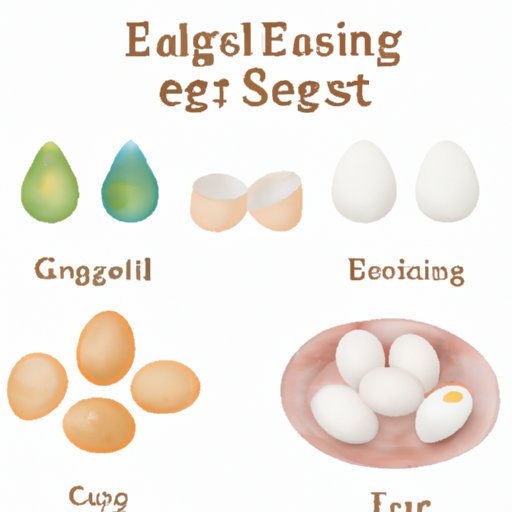
Introduction
Easter is one of the most beloved holidays of the year, and one of the most popular traditions is egg dyeing. Whether you celebrate Easter or not, dyeing eggs with food coloring is a fun activity for the whole family, and it’s easy to do at home. In this article, we will cover everything you need to know about dyeing eggs with food coloring, including step-by-step instructions, recipes, tips, and eco-friendly alternatives. Let’s get started!
Step-by-Step Guide
Dyeing eggs with food coloring is easy and straightforward. Here is a step-by-step guide:
- Boil the eggs and let them cool. This step is crucial in ensuring that the dye adheres to the eggshell properly.
- Prepare the dye by mixing food coloring, vinegar, and water in a small bowl or cup. The basic ratio is one tablespoon of vinegar for every cup of water, but you can adjust it according to your preference.
- Place the egg in the dye mixture and let it sit for at least five minutes. To achieve a more vibrant color, you can leave the egg in the dye for longer.
- Remove the egg from the dye and let it dry completely. You can air-dry the eggs or use a paper towel to gently pat them dry.
- Repeat the process with different dye colors or create a new shade by mixing two or more colors.
Here are some tips to keep in mind:
- Use gel food coloring for more vibrant and intense colors.
- The longer you leave the egg in the dye, the deeper the color will be. However, be careful not to leave it too long as it may cause the dye to seep through the eggshell and affect the taste.
- If you want to create a two-tone egg, dye half of the egg in one color and the other half in another color.
- You can add patterns or designs to the eggshell by using a white crayon or wax to draw on the egg before dyeing it.
Recipes & Variations
There are many recipes and variations for dyeing eggs with food coloring. Here are some ideas to try:
- Natural Dye: Instead of using commercial food coloring, you can use natural ingredients like beet juice, spinach, or turmeric to create unique colors. Boil the ingredients in water for at least 30 minutes, strain, and cool before using. You can also experiment with different ingredients to create your own unique color palette.
- Ombre Eggs: Create a gradient effect by using different shades of the same color. Start with the lightest shade and gradually add more food coloring to the mixture to create deeper shades.
- Speckled Eggs: To create a speckled effect, mix food coloring with a tablespoon of vegetable oil and flick it onto the egg using a toothbrush or paintbrush. You can also use a dry brush to create a more subtle effect.
- Tie-Dye Eggs: Create a tie-dye effect by wrapping the egg in a rubber band before dyeing it. The band will create a resist effect, resulting in a unique pattern.
Best Practices & Troubleshooting
Here are some best practices and troubleshooting tips to follow:
- Use white vinegar instead of apple cider vinegar as it can affect the color of the dye.
- Make sure the eggs are completely dry before dyeing them to prevent the dye from slipping.
- If the dye is not adhering properly, try wiping the egg with white vinegar before dyeing it.
- If the color is too light, leave the egg in the dye for a longer period or add more food coloring to the mixture.
- If the eggshell cracks during the dyeing process, you can use an edible marker or food coloring to cover it up.
Eco-Friendly Options
If you’re looking for eco-friendly alternatives to traditional food coloring dyes, there are many options to consider:
- Vegetable Dyes: As mentioned earlier, you can use natural ingredients like beet juice, spinach, or turmeric to create unique colors.
- Food Waste: Instead of throwing away leftover produce, you can use them to dye eggs. For example, onion skins can be boiled with water to create a beautiful orange-brown hue.
- Natural Food Coloring: Look for natural food coloring products that are made from plant-based ingredients.
Tips for Decorating with Food Coloring
Dyeing eggs with food coloring is just the first step. To make them even more festive and fun, here are some decorating ideas:
- Use a white crayon or wax to draw on the egg before dyeing it to create patterns or designs.
- Wrap the egg with rubber bands to create a resist effect, then dye it in different colors. Remove the bands once the egg is dry to reveal a unique pattern.
- Use metallic food coloring or edible glitter to add sparkle and shine to the eggs.
- Glue sequins, beads, or other small objects onto the egg to create a three-dimensional effect.
Conclusion
Dyeing eggs with food coloring is a fun and easy activity that can be enjoyed by people of all ages. With this guide, you have all the information you need to create beautiful, vibrant eggs with a variety of techniques and ingredients.





